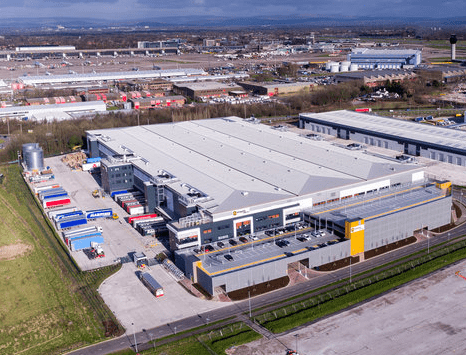Following is a brief case study from UK firm Lunar Aerial Imaging that sketches out how they navigated permission to fly adjacent to Manchester Airport.
Guest post from Lunar Aerial Imaging —
A preposterous proposition to most, and to many – especially in the current climate – one that could arouse feelings of apprehension or even fear. And yes, rogue drones, unlicensed and unpoliced, are giving an emerging industry a bad rap – with media coverage that matches. However, if done properly, drone aerial photography and filming undertaken by an approved pilot can prove to be a cost-effective, environmentally friendly, and safe alternative to traditional methods of – say – using a helicopter to obtain your shots.
The following case study will examine and outline how the commercial drone company LUNAR Aerial Imaging obtained permission to work immediately adjacent to airport grounds, following the Civil Aviation Authority’s (CAA) necessary rules. The particular airport in question is Manchester Airport.
Drone pilot makes preliminary call to Air Traffic Control
First of all a phone call to Air Traffic Control (ATC) by LUNAR’s drone pilot Gregory Chivers was made. The call contained the following: an outline for the reasons LUNAR would be filming adjacent to the airport in the airport’s no-fly zone, and a detailed plan of where the sites for take off or ‘fly-zones’ would be. The proposed fly-zones were shown on a detailed and illustrated map, which was sent prior to the phone call.
This preliminary call was to explore the feasibility of the job. ATC were happy with LUNAR’s CAA Permission for Aerial Work (PfAW) and proposed flight plan and quickly agreed in theory to the flight providing we took all appropriate safety precautions.
Unlocking the drone’s no fly zone restriction- contacting DJI
Next up for the team was to request an ‘unlock’ code from the flight system developer, DJI. The unlock code ensures the drone can take off inside the no fly zone of the airport, a welcomed feature preventing rogue drones. This was done three to four days before the expected flight window. The dates of the flight window were specified to ensure that the code did not expire before the filming. DJI required confirmation from ATC, a copy of the pilot’s PfAW, photo ID, and the co-ordinates of the flight sites – which was all double and triple checked by the Lunar team.
Air Traffic Control’s approval to fly the drone
The second verbal contact with the ATC was to gain their official approval to fly. The ATC already had a LUNAR NSF file (non-standard flight approval) on their system, plus flight maps and other necessary documents such as LUNAR’s PfAW and public liability insurance. ATC requested a copy of the risk assessment and site assessment. Once they received and approved these LUNAR got the official ATC approval to fly, issued with a height restriction of 200 feet. The approval came in the form of an email. LUNAR ensured they had a hard copy of the email on the day to assure anyone questioning the drone flying.
Airport police & management
The airport police needed to be contacted; for them the confirmation email from the ATC, our PfAW, the public liability and risk assessments were satisfactory. They also required a mobile contact telephone number that they could use to contact us at any time while working on site.
The Manchester Airport management team also needed to be kept in the loop, and they too requested the same paperwork.
All the dealings with the separate organisations were done directly by the LUNAR team, to ensure efficiency, and no third parties were involved.
Flying the drone at the airport
On the day of the flight the ATC were contacted at the following times: when arriving on site, immediately before the first take off at each site, and again when the day’s drone flying was over. Once on site LUNAR liaised directly with the ATC’s duty officer and 300ft was granted as the maximum altitude. The Observer had to be available on the mobile throughout the day, in case there was an emergency or any unusual occurrence. Should such an event arise the Observer would advise the pilot to land the drone immediately.
Site inductions, appointed escorts, and thorough liaison with site management were all necessary before filming as the majority of our work was conducted on live construction sites. But after the initial inductions to the various locations, the many necessary calls and confirmations, our experienced team could finally get underway with the task at hand: producing another happy customer.
Frank Schroth is editor in chief of DroneLife, the authoritative source for news and analysis on the drone industry: it’s people, products, trends, and events.
Email Frank
TWITTER:@fschroth
